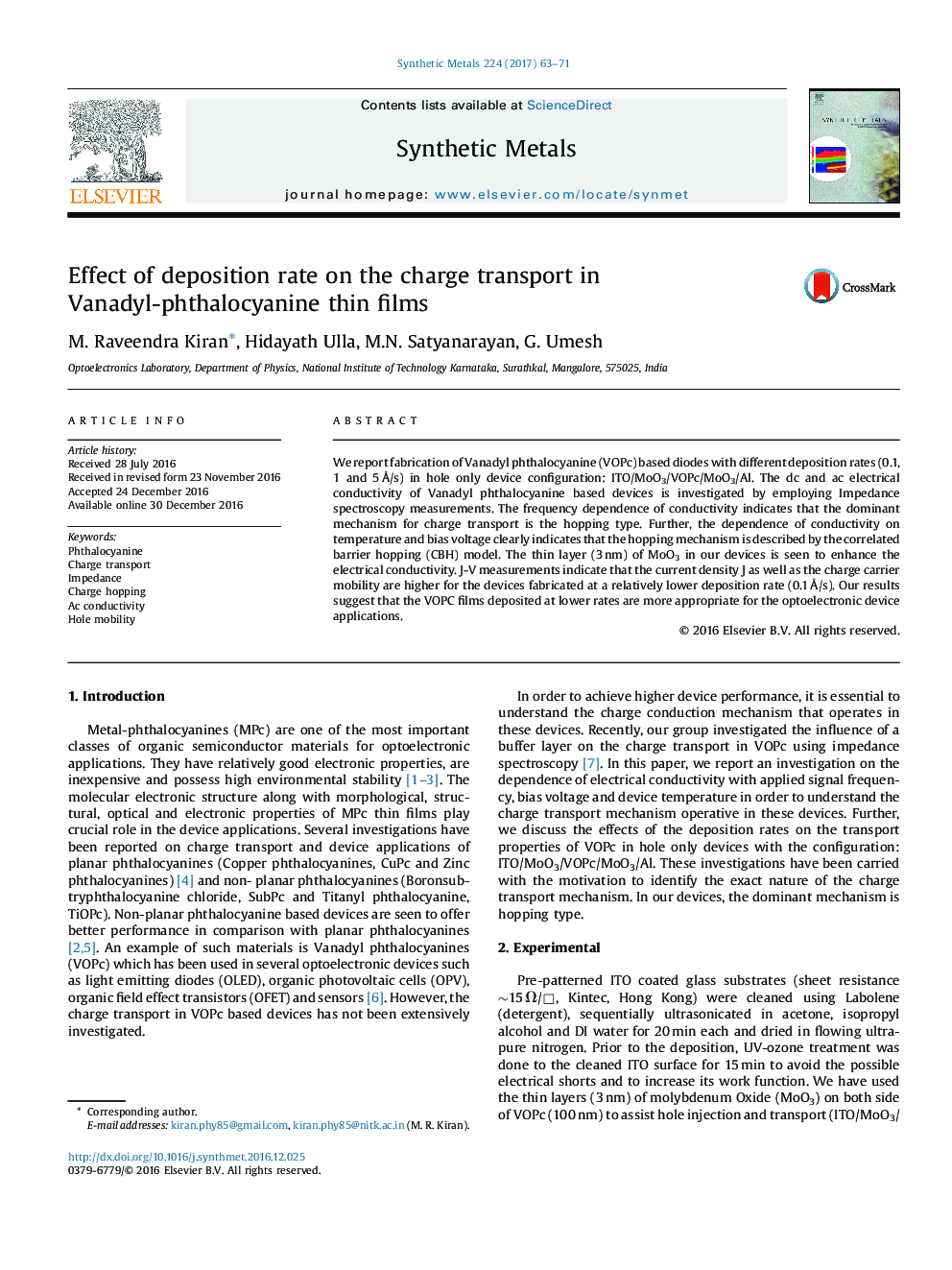| Article ID | Journal | Published Year | Pages | File Type |
|---|---|---|---|---|
| 5435545 | Synthetic Metals | 2017 | 9 Pages |
â¢VOPc based diodes are fabricated at three different deposition rates 0.1, 1 and 5 à /s.â¢Hole mobility was estimated using SCLC regime in J-V characteristics.â¢The conduction mechanism is space charge limited with exponential trap distribution.â¢The charge carrier mobility measured form J-V characteristics is consistent with the mobilities estimated from Impedance measurements.â¢The frequency dependence of dc and ac conductivity at various temperatures indicate that the dominant mechanism for charge transport is the hopping type.
We report fabrication of Vanadyl phthalocyanine (VOPc) based diodes with different deposition rates (0.1, 1 and 5Â Ã /s) in hole only device configuration: ITO/MoO3/VOPc/MoO3/Al. The dc and ac electrical conductivity of Vanadyl phthalocyanine based devices is investigated by employing Impedance spectroscopy measurements. The frequency dependence of conductivity indicates that the dominant mechanism for charge transport is the hopping type. Further, the dependence of conductivity on temperature and bias voltage clearly indicates that the hopping mechanism is described by the correlated barrier hopping (CBH) model. The thin layer (3Â nm) of MoO3 in our devices is seen to enhance the electrical conductivity. J-V measurements indicate that the current density J as well as the charge carrier mobility are higher for the devices fabricated at a relatively lower deposition rate (0.1Â Ã /s). Our results suggest that the VOPC films deposited at lower rates are more appropriate for the optoelectronic device applications.
Graphical abstractDownload high-res image (209KB)Download full-size image
